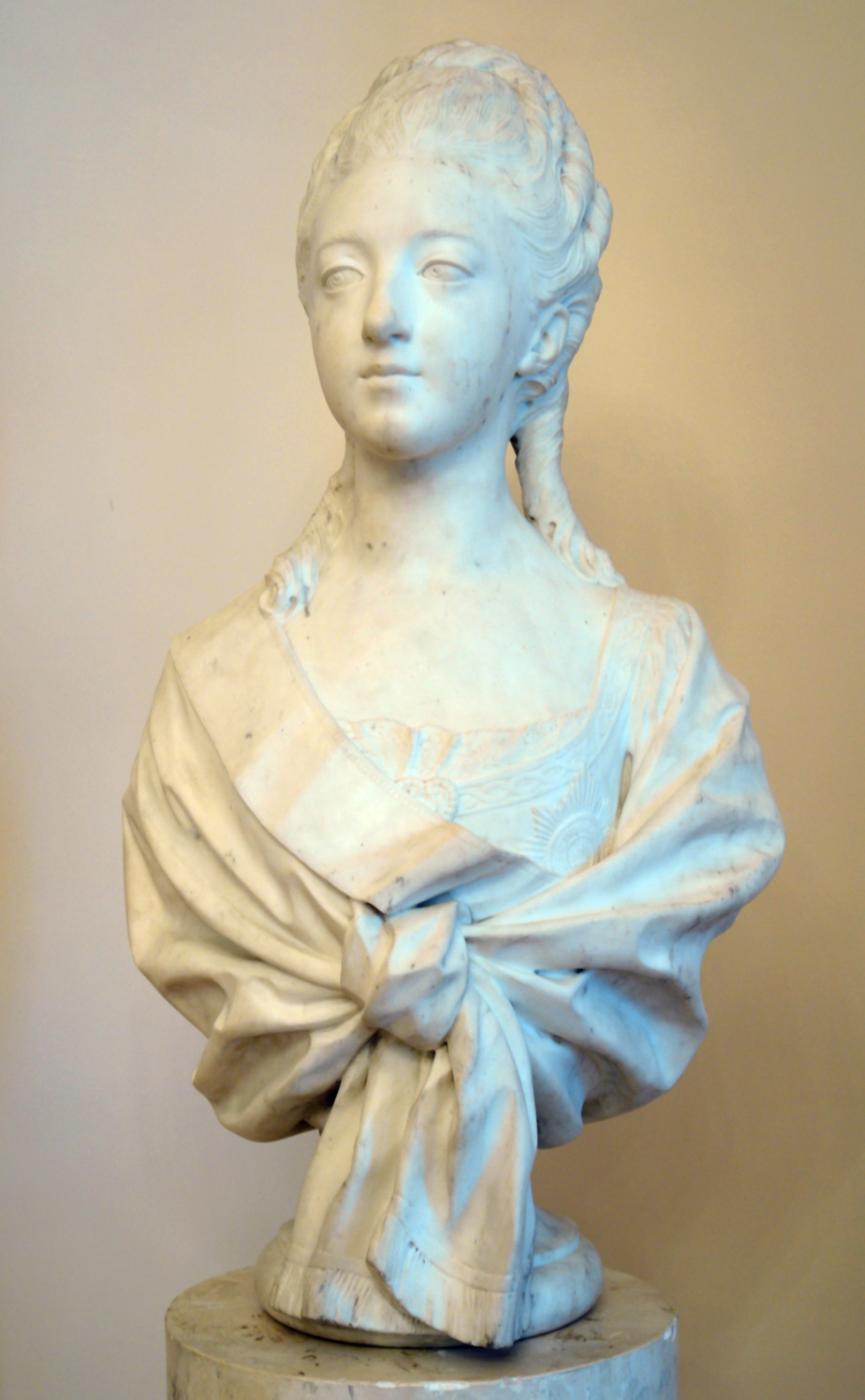Marie-Anne Collot (1748 – 24 February 1821) was a French sculptor. She was the student and daughter-in-law of Etienne Falconet and is most well known as a portraitist, close to the philosophic and artistic circles of Diderot and Catherine the Great.
Marie-Anne Collot was born in Paris and started to work as a model at the age of 15 in the workshop of Jean-Baptiste II Lemoyne.[1]
He had a determining influence on her career as a portraitist. She then
entered Etienne Falconet’s workshop, who was a close friend of Diderot.
She became Falconet’s pupil and faithful friend. Her younger brother
became an apprentice at the publisher’s André Le Breton, who was one of the four publishers of Diderot and D’Alembert’s Encyclopédie.
Her first works consisted of terracotta busts of Falconet’s friends including Diderot, the actor Préville in the role of Sganarelle in “Le médecin malgré lui” by Molière, and Prince Dimitri Alexeievich Galitzine, Russian ambassador. Many other works are now lost.
From then on everyone recognised her talent, sincerity and lively spirit.
In October 1766 Marie-Anne Collot accompanied Falconet to St. Petersburg, when he was invited by Catherine the Great with a view to creating an equestrian statue of Peter the Great.
She sculpted the portraits of members of the Russian Court. They
marvelled at the talent of this young woman sculptor, they could
remember none other, and she was only 18 years old.
In December of the same year she presented her work to the Imperial
Academy of Arts, of which she was elected a member on 20 January 1767.
She received a comfortable pension, which to her represented a fortune.
Collot sculpted a bust representing Falconet at Catherine the Great’s
request. This is now in the Museum of Fine Art in Nancy, France. She
also requested a bust of Diderot in 1772. When Falconet saw its quality
it is said that he destroyed the one he had made himself of Diderot. The
bust is in the State Hermitage Museum in St. Petersburg.
Then followed busts of Henry IV of France, Sully, Voltaire, and
possibly one of D’Alembert (now lost?). Also several of the Empress
herself, the Grand Duke Paul I and his wife the Grand Duchess Natalia,
as well as marble medallions of historical characters and people
associated with the Russian court; Peter the Great, the Empress
Elizabeth, and Lady Cathcart, the wife of Lord Cathcart,
British Ambassador to Russia. She also made a superb bust of their
daughter Mary. It was said that there started to be a shortage of marble
in St. Petersburg.[citation needed]
Falconet left it to his protégée, so gifted for sculpting portraits, the
difficult task of making the head of Peter the Great for the equestrian
statue called “The Bronze Horseman” in St. Petersburg. He studied how
to make it and submitted a project which satisfied everybody.
In 1777 Marie-Anne Collot married the painter Pierre-Etienne Falconet
in St. Petersburg. He was the son of Etienne Falconet. A daughter was
born of the union a year later. The marriage was however unhappy and
short-lived. Madame Falconet returned to France in 1778 with her baby.
Collot gave up sculpting completely, concentrating from then on on
her daughter’s education and helping her father-in-law who had fallen
gravely ill. She continued to do so until his death in 1791.
The French Revolution completely upset the world of artists, writers
and philosophers. With her master, her husband and her friends having
died, in 1791 Madame Falconet bought a country estate at Marimont, near
the village of Bourdonnay in Moselle, France. She retired to there and
led a peaceful life. She died in Nancy, and is buried at Bourdonnay.[2]

